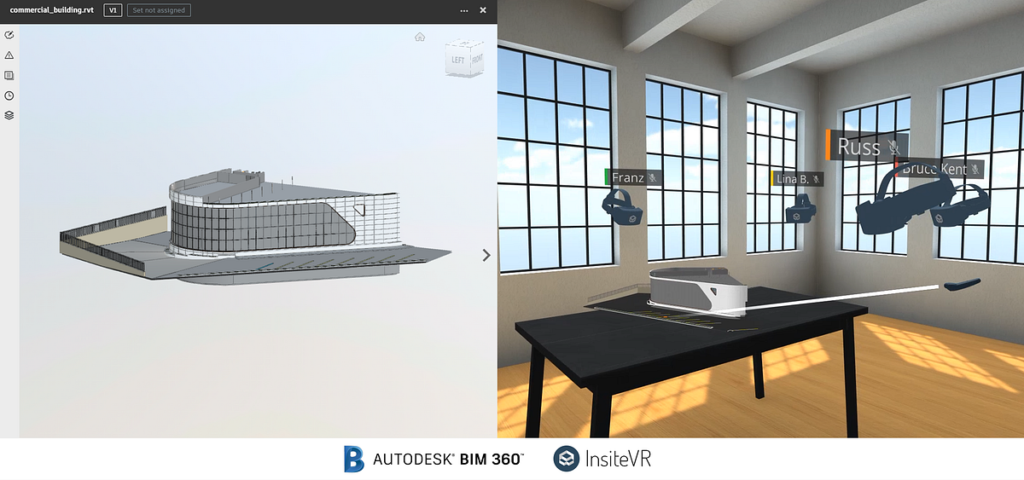In the realm of Real Estate and AEC, both Augmented Reality and Virtual Reality in Real Estate and AEC Industry holds immense potential, offering innovative solutions and applications that enhance visualization, design, and communication processes. From interactive property tours to real-time collaboration among project stakeholders, these applications are reshaping how professionals in these industries conceptualize, present, and execute their projects. Learn about the transformative impact of Augmented Reality and Virtual Reality in Real Estate and AEC Industry specifically in Real Estate and the AEC industry.
A brief history of Augmented Reality usage and adoption in Real Estate and AEC Industry.
The gaming app Pokémon Go utilizes Augmented Reality and has proved to be a huge success. With its launch, there were about 45 million users, and currently, it is estimated to have a 30 million user base. This demonstrates the potential of AR. With its wide variety of applications, its relevance in real estate and the general Architecture, Engineering and Construction industry is even more significant.
The first commercial application of augmented reality can be attributed to advertising purposes by German agencies. It was a printed model of BMW Mini, which held in front of a computer camera, also appeared on the screen. Some other early adaptation includes by National Geographic in 2011, depicting rare and extinct animals’ species as walking through a shopping mall.
There are some common augmented reality applications we have usage on a mass scale. For example, snap chat uses facets of augmented reality. Also google translate provides the feature of pointing your camera towards a text and the application would provide a translation in the preferred language.
Also learn about our article on Generative and Algorithmic design in Architecture

Explore on NFTs and Architecture for the Metaverse
The value of Augmented reality in real estate can be found in the following fields.
-
Marketing
Selling and marketing products through AR could be done by augmenting any existing print medium. Such as developing brochures with AR pointers, when pointed at with a camera would provide more details or even the 3d model of a project to look at.
-
Product / Design development.
The development of design for projects could be fast-tracked by actively utilizing Augmented reality for fine-tuning of design and get a location-specific outlook of how a design would look. A locality can be superimposed with the proposed design and could be interacted with in real-time viewing all aspects of the design.
-
Service
The difficult aspects of facility management and operations for real estate developments and properties could be aided by AR technologies. Manufacturers could provide AR capabilities in user manuals and maintenance manuals. This might be especially useful for working in difficult, remote, or hazardous conditions. In essence, the manufacturer or vendor can provide more information at the hands of the users or clients for better troubleshooting through augmented reality. The end-users need not spend endless time browsing on the internet and going through many service videos.
-
Manufacturing
Manufacturing in the construction and real estate industry is very different from manufacturing other consumer goods. Here the manufactured goods such as Doors, Windows, Dry Walls, etc. need to be installed on a site. Again, AR could help in the installation processes. Imagine a step-by-step installation for a door or a window for a specific project and size, being seen in AR by the installer. It will be help both skilled and unskilled workforce and speed up the installation process.
From an Interior design perspective following apps are found in use.
Houzz AR app allows checking the interior space with different tile selections, wall, and decoration options. The simple step to follow is – 1. Select products in the Houzz Shop, 2. Scan the floor, 3. See the different tile options available. 4. Calculate the required amount of tile for the area.
Ikea place is available with Apple’s new AR Kit technology. It allows trying the entire catalogue of furniture and interior decoration items. It will superimpose Ikea products in your homes, giving a very realistic representation of the actual product in the context of your homes.
;
Wayfair offers AR capabilities across apple ios as well as android devices. Wayfair uses ARCore in android to provide AR capabilities for interior and furniture shopping applications.
Azek provides augmented reality solutions to view realistic 2d or 3d depictions of mouldings, deck, railing, porch and pavers projects and their visualization of how they would look after completion. Azek is a leading exterior building products manufacture, and their augmented reality mobile strategy is to make it easy for contractors and consumers to explore colours, patterns, textures etc.
Augmented reality can be accessed through the cameras of mobile phones or could also be accessed HMDs also known as head-mounted displays. Head-mounted displays started off with Google lens. And currently, some head-mounted displays in the market with valid use and applications include Microsoft Hololens, ODG R-7 and Google Glass Enterprise.
Explore our article on AI Floor Plan Generators: A Comprehensive Review
Virtual Reality: Revolutionizing Real Estate and AEC Industry
Virtual Reality (VR) is a groundbreaking technology that has significantly impacted various industries, particularly real estate and the Architecture, Engineering, and Construction (AEC) sectors. Unlike Augmented Reality (AR), which overlays digital elements onto the real world, VR immerses users in a fully computer-generated environment, offering a transformative way to experience spaces and designs.
Imagine sitting on your couch and exploring your dream home as if you’re actually there. With VR, potential buyers or tenants can experience immersive property tours, walking through every room and getting a true sense of the property’s layout and ambiance. It saves time and resources for both real estate agents and clients, eliminating the need for physical visits.
Why is Virtual Reality an Important tool in AEC and Real Estate Industry?
1. Enhanced Visualization for Developers and Architects
VR provides developers and architects with a powerful tool for visualization. If an architecture firm creates a VR model of a new office building, stakeholders, including the client and contractors, can explore the virtual space together, providing feedback and making adjustments in real-time, ensuring the project stays on track and meets all requirements. This detailed 3D models of buildings will help in identifying design flaws and ensuring the final product meets expectations even before the construction begins. This immersive experience enhances communication and collaboration among project teams.
2. Streamlining Design and Construction Processes
In the AEC industry, VR streamlines design and construction processes by enabling real-time collaboration and visualization. Architects and engineers can collaborate in a virtual space, examining every aspect of the design and making modifications as needed. Construction teams benefit from visualizing project stages, improving project management and ensuring construction aligns with the planned design.
3. Virtual Staging and Marketing
VR plays a crucial role in marketing properties by allowing real estate agents to stage homes virtually. Furnished and decorated spaces can be presented to potential buyers, customized to match different tastes and preferences. VR marketing campaigns can include interactive elements, such as clickable hotspots, providing detailed information about specific features of the property, creating an engaging experience for users.
A real estate agent can use VR to stage a vacant home, virtually adding furniture and decor to showcase its full potential. Potential buyers can explore different design options and visualize themselves living in the space, increasing their emotional connection to the property, making it a much important tool in Real Estate Industry.
4. Training and Safety
In construction, VR is used for training and safety simulations, providing workers with virtual experiences that replicate real-world scenarios. Virtual training sessions help workers enhance their skills and preparedness, while safety drills conducted in a VR environment allow workers to practice safety protocols without the risks associated with real-world training.
5. Remote Collaboration
VR enables remote collaboration, allowing teams located in different parts of the world to meet in a virtual space, discuss projects, and make decisions without the need for physical travel. This capability saves time and costs, facilitates international collaborations, and promotes the exchange of ideas among project teams.
Apps and Software for Virtual Reality in AEC and Real Estate Industry
Several applications and software platforms exemplify the use of VR in real estate and AEC:
1. Matterport:
Matterport allows users to create immersive 3D tours of properties, enabling virtual walkthroughs that enhance property listings and marketing efforts. Beyond just creating immersive 3D tours, Matterport offers additional features that enhance property marketing efforts. Users can add annotations, labels, and multimedia content to their virtual tours, providing potential buyers with detailed information about the property. Matterport also integrates with popular real estate platforms, making it easy for agents to showcase their listings across multiple channels and reach a wider audience.

2. IrisVR:
IrisVR facilitates VR collaboration for AEC professionals, enabling real-time design review and coordination in a virtual environment. In addition to facilitating VR collaboration, IrisVR offers tools for immersive design presentations. AEC professionals can use IrisVR to create interactive walkthroughs of their projects, allowing clients and stakeholders to experience designs in a more engaging and intuitive way. With features like real-time rendering and customizable environments, IrisVR empowers architects to communicate their vision effectively and secure buy-in from clients.

3. Lumion:
Lumion provides architectural visualization software that integrates with VR, allowing architects to create stunning visual representations of their designs and environments. Apart from architectural visualization, Lumion is equipped with tools for landscape design and visualization. Architects can use Lumion to create lifelike outdoor environments, complete with terrain, vegetation, water features, and atmospheric effects. This comprehensive approach to visualization allows architects to present their designs in context, giving clients a holistic understanding of how the project will look and feel in its surroundings.

4. InsiteVR:
InsiteVR enables AEC teams to experience their projects in VR, improving communication and decision-making throughout the design and construction phases. InsiteVR goes beyond just experiencing projects in VR; it also facilitates immersive design reviews and virtual meetings. AEC teams can use InsiteVR to collaborate in a virtual space, discussing designs, making decisions, and resolving issues in real-time. With features like multi-user support and synchronized navigation, InsiteVR fosters seamless communication and collaboration among project stakeholders, ultimately improving project outcomes.

The future of VR in real estate and the AEC industry looks promising. As the technology advances, we can expect even more sophisticated VR applications that offer higher levels of realism and interactivity. Integration with other technologies, such as AI and IoT, will further enhance the capabilities of VR, providing smarter and more intuitive solutions for real estate and construction professionals.
What is the difference between Augmented Reality and Virtual Reality?
Augmented Reality (AR) and Virtual Reality (VR) are both immersive technologies, but they differ in their approach and how they integrate digital content with the real world:
Augmented Reality (AR):
- AR overlays digital content onto the real world, enhancing the user’s perception of reality.
- Users can see and interact with both the real environment and digital elements simultaneously through devices like smartphones, tablets, or AR glasses.
- AR enhances real-world experiences by adding digital information such as text, images, or 3D models onto physical objects or locations.
- Examples of AR include Pokémon GO, where digital creatures appear in real-world settings through a smartphone camera, or AR navigation apps that overlay directions onto the streets in front of the user.
Virtual Reality (VR):
- VR immerses users in a completely computer-generated environment, isolating them from the physical world.
- Users typically wear VR headsets that completely block out the real world and replace it with a simulated environment.
- VR creates a sense of presence and immersion by providing users with a 360-degree view of a virtual space that responds to their movements.
- VR experiences can range from realistic simulations of real-world environments to entirely fantastical worlds.
- Examples of VR include immersive gaming experiences, virtual tours of distant locations, or virtual training simulations for various industries.
In short, while AR enhances the real world by adding digital elements to it, VR creates entirely immersive digital environments that users can explore and interact with.
Both Augmented Reality and Virtual Reality are revolutionizing the real estate and AEC industries. While AR enhances the real world with digital overlays, VR offers a fully immersive experience that transforms how we visualize, design, market, and interact with spaces. By leveraging these technologies, professionals in these fields can improve efficiency, enhance communication, and provide more engaging and effective experiences for clients and stakeholders. Embracing AR and VR is not just a trend but a strategic move towards a more innovative and efficient future in real estate and construction.
As a consulting firm, we are excited to use Augmented Reality and Virtual Reality applications within the real estate industry & Architecture, Engineering and Construction industries.




